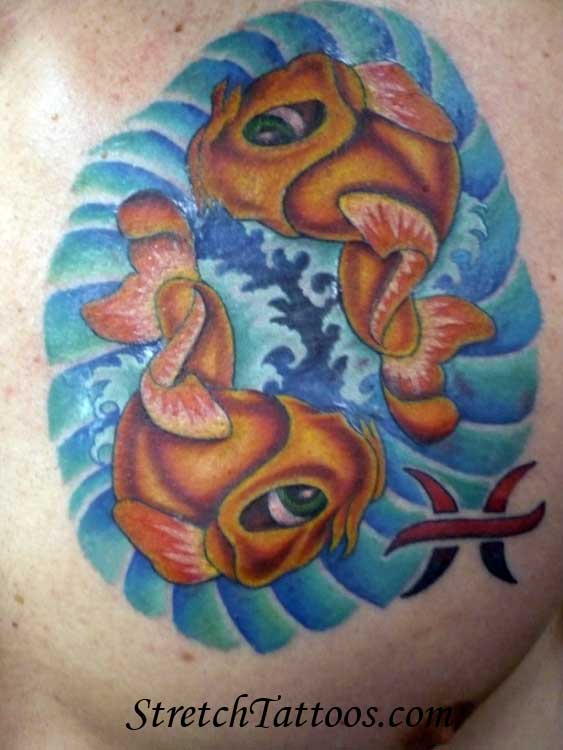tribal tattoos,Japanese tattoo,Chinese tattoos,Asian tattoos,kids tattoos,Celtic tattoos,girls tattoos, back tattoos,lower back tattoos, man tattoo and many more
Monday, June 29, 2009
Kanji Tattoos
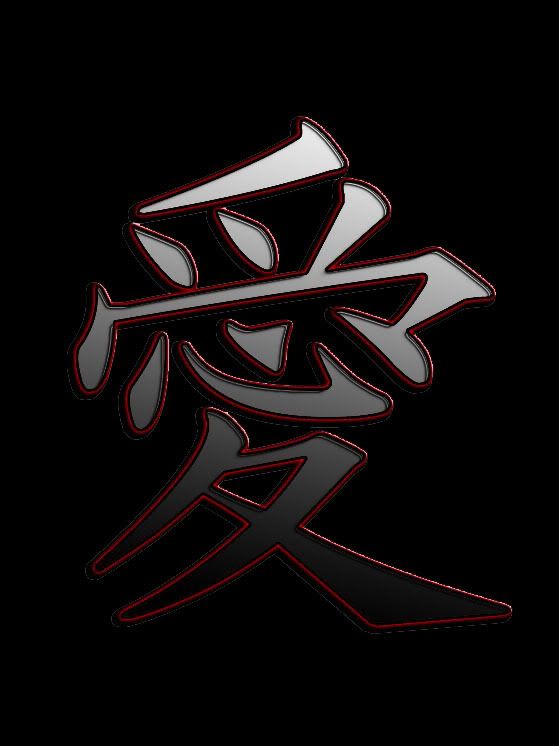 Japanese Kanji Tattoos are fast becoming the most popular tattoo design. Japanese Kanji characters are so incredibly artistic and have such mystique that it seems as though they were created ideally for the purpose of tattoos.
Japanese Kanji Tattoos are fast becoming the most popular tattoo design. Japanese Kanji characters are so incredibly artistic and have such mystique that it seems as though they were created ideally for the purpose of tattoos.Phoenix Tattoos
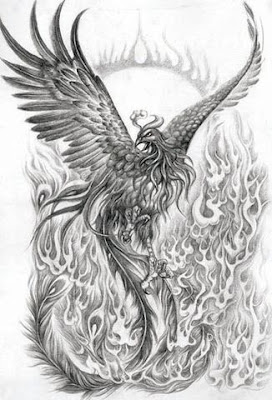
The phoenix incorporates notions of life, rebirth and renewal. If you are contemplating a phoenix bird tattoo you need to take these values into account. Also, a phoenix bird of fire tattoo must be of sufficient size to make an impact. This is a magnificent bird and deserves respect - size is important. You simply can't represent the idea of eternal life with a small tattoo!
Hikae Tattoo
The spectacular and sometimes nearly full-coverage tattoo known as the “body suit” originated sometime around 1700 as a reaction to strict laws concerning conspicuous displays of wealth and perhaps also as an emulation of the fireman's suit or firemen's tattoos (since firemen of Edo were some of the first tattoo clients to embrace the new era of tattooing). Because only the nobility were allowed to wear fine clothing, the middle class person who wanted to adorn themselves sometimes chose a tattoo. The idea of the full body tattoo may derive from the samuraith century and the beginning of the 19th, an illustrated work of fiction imported from China created both unprecedented inspiration and desire for tattoos. The SuikodenThe Water Margin) was a Robin Hood type of tale that recounted the exploits of 108 heroes, many of whom were tattooed. It was a tale that resonated with the repressed classes of the period but it was not until woodblock prints of the heroes were illustrated by Utagawa Kuniyoshi and published in the early to mid-19th century that its popularity exploded. The images were extremely influential in the world of tattoo design and these original prints continue in use to this day.
 Not all traditional Japanese tattooing takes the form of the body suit, however. Coverage for various different regions of the body had also become codified. The chest panels, or hikae, in this photo are a classic placement, often blending from the chest, through the shoulder, and into a sleeve that might be long (ending at the wrist, nagasode), seven tenths (ending mid-forearm, shichibu), or five tenths (ending above the elbow, gobu).
Not all traditional Japanese tattooing takes the form of the body suit, however. Coverage for various different regions of the body had also become codified. The chest panels, or hikae, in this photo are a classic placement, often blending from the chest, through the shoulder, and into a sleeve that might be long (ending at the wrist, nagasode), seven tenths (ending mid-forearm, shichibu), or five tenths (ending above the elbow, gobu).Greg is tattooing the right hikae, with the central design element of a tiger. In the Far East, the tiger is considered the king of all animals. Its distinctly striped coloration, alternating black and orange, with white in the face and underbelly, makes it a fascinating subject for tattoo design, one that is often done in full color. In the Chinese zodiac, it is the third sign and people born in the year of the tiger are as mercurial as their symbol: short-tempered and yet capable of great sympathy, prone to be suspicious but also full of courage and power. In Chinese mythology, it is sometimes considered the opposite of the dragon.
In the left hikae, already done, the central design element is a rooster. In the Chinese zodiac, people born in the year of the rooster are considered deep thinkers and loners, whose emotions can swing from high to low. With its sometimes flowing and arching tail feathers and its red-colored head comb, Buddhists have associated it with pride and passion while Japanese Shintoists show it on a drum as a call to prayer. warriors’ sleeveless campaign coat, which typically displayed heroic designs on the back, symbols of courage and pride, or perhaps a guardian deity or dragon. Similarly, tattoo designs began on the back and gradually extended to the shoulders, arms, thighs, and eventually the entire body. Tattooing over the entire front of the upper part of the torso with the exception of a vertical strip running from the chest to the abdomen, gave the effect of an unbuttoned vest. The development of the body suit, though, also coincided with the popularity of fictional tattooed heroes. At the end of the 18 (translated as
Japanese tattoo artwork

Tattoos are trend among youngsters. Japanese tattoo design is now proving to be a smart choice among the youngsters. A lot of credit goes to Internet, which has made the Japanese tattoo artwork even more popular. However, the quality in the artwork is lacking when Japanese tattoo are bought online. Since the web is filled with so much of generic material, it has become near to impossible to find out quality Japanese tattoo artwork. Here we are to guide you to get to the good stuff online.
If you don’t want to settle down to the generic artwork as provided online then avoid search engines to do your search. When it comes to finding genuine and good quality Japanese tattoo designs, search engines provide the worst solution. The “so-called” Japanese tattoo designs provided by the search engines might be already copy-pasted by hundreds of other websites. Ultimately, you will find that many people have already got their skin inked by the same Japanese tattoo design. So why should you compromise with your idea of being different from the crowd? Better skip the search engines that are more or less miss-guiding when it comes to getting Japanese tattoo designs which are not generic art work.
Now that you have dumped the idea of search engines to find the tattoo designs, the final option is visiting Internet forums. They are perhaps the best things invented for locating artwork for tattoos specifically Japanese tattoo designs. Internet forum never seem to fail and they can indeed provide you the best solution for finding your desired Japanese tattoo artwork.
Monday, June 22, 2009
Friday, June 19, 2009
Tuesday, June 16, 2009
Pictures Of Tribal Tattoos
 Beautiful big tribal tattoo on the back.
Beautiful big tribal tattoo on the back.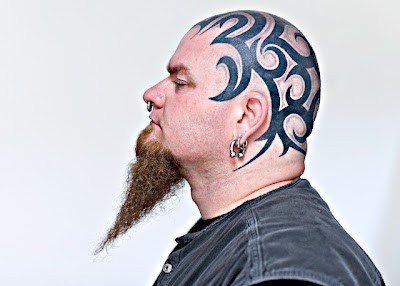 Tribal tattoo on baldy head.
Tribal tattoo on baldy head. Artistic tribal tattoo on man's shoulder to arm.
Artistic tribal tattoo on man's shoulder to arm.Monday, June 15, 2009
Friday, June 12, 2009
Heart Tattoo Pictures
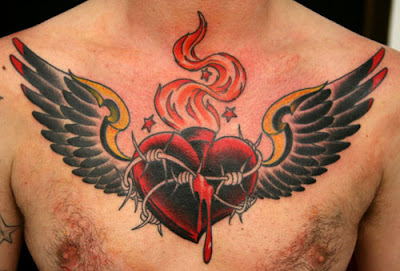 Sacred heart tattoo barb wired and winged.
Sacred heart tattoo barb wired and winged. Sacred heart tattoo on the back.
Sacred heart tattoo on the back. Lovely heart tattoo on woman's arm.
Lovely heart tattoo on woman's arm.









